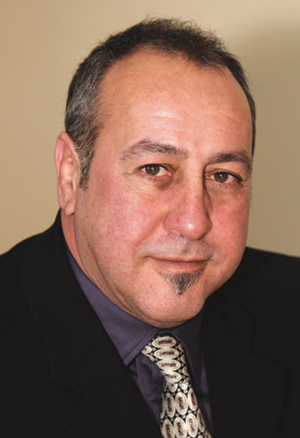Premier Dalton McGuinty and his cabinet have assured Ontario Catholics that full funding for the separate school system remains firmly in place, but the public at large is turning up the heat on the issue and the Supreme Court of Canada may end up making the decision politicians of all stripes fear.

The latest controversy is over Bill 13, a piece of legislation passed last week that amended the Education Act with respect to bullying. Most controversially, it now allows students to set up clubs called gay-straight alliances in both the public and Catholic school systems.
Predictably, Thomas Cardinal Collins, archbishop of Toronto, isn’t happy and is already warning that Catholic schools won’t accept gay-straight alliances.
Jim Hughes, national president of the Campaign Life Coalition, went further: “It appears that the minister of education is an apologist for the homosexual activists and their drive to insert their agenda into all schools. They propose to open the doors to an agenda opposed to Catholic teaching.
We remind the government that schools and hospitals in Ontario were primarily established by the Catholic church at the time of the BNA Act, which guarantees their denominational rights.”
The Catholic church, then, appears to have played the two aces in its hand: its right to religious autonomy and the constitutionally protected right to school funding.
But in reality, the church has merely harmed itself.
Meet Reva Landau, a non-practising lawyer and author of a couple of books on women’s issues.
She has brought a challenge to the Supreme Court of Canada asking it to clarify the constitutional obligation to fund Catholic schools.
As a compromise and in order to underline the peace between Britain and France, the British North America Act of 1867 included s. 93 that ensured education in both the Catholic and Protestant faiths.
Landau argues the clause only enshrined funding for grades 1 to 8 and then only to those who declare support for the Catholic system on their property taxes and live within roughly five kilometres of a separate school.
She wants the top court to strike down funding for grades 9 to 12 and notes Quebec opted out of s. 93 in 1997 and doesn’t support faith-based schools anymore. In effect, she says the contract is broken and null and void.
Her case is a long shot, to be sure. But it has a chance, and that’s what’s so intriguing because politically no one will stand up and suggest cutting funding for separate schools in Ontario because it’s a kiss-of-death issue even though the consensus would seem to lean towards one public system.
Almost any politician who has meddled with the system has suffered at the ballot box. Ask former Conservative leader John Tory, who blurted out his pledge to extend full funding to all faith-based schools in 2007 and lost the election that was his to win.
Former conservative premier Bill Davis’ legacy around the time of his resignation in 1984 was to extend full funding to include grades 11 to 13 and thereby reverse a stand the government had held for 15 years.
In the ensuing general election, voters reduced the government to a minority that eventually fell when the NDP and the Liberals joined together on a non-confidence vote.
The secularists have weighed in, too, with this comment from Justin Trottier, national communications director of the Centre for Inquiry: “The real question now is whether Ontario should be required to continue to support Catholic schools.
The elephant in the room — public funding of Catholic schools — has become so destructive to fundamental rights and equality it’s impossible to ignore.
This debate has been going on since before Confederation and it isn’t going away. More recently, it was over Mark Hall and his right to take a date to his high school prom and today it’s over gay-straight alliances.”
While neither the government nor the Opposition will wade into this minefield wholesale, there were rumblings earlier around the future of separate schools.
Ontario clearly needs to reduce the deficit and rationalize costs. As a result, it’s investigating how much it could save by combining public and separate school administrations in some jurisdictions.
Ontario is unique in having two systems in Canada, but it comes at a cost of $1.5 billion a year. While some say Catholic schools provide a superior educational experience, that’s because they can expel troublesome students who cause a drag on performance and relegate them to the public system.
Maybe it’s time to say the church has no place in Ontario classrooms.
Ian Harvey has been a journalist for 35 years writing about a diverse range of issues including legal and political affairs. His e-mail address is
[email protected].

 The latest controversy is over Bill 13, a piece of legislation passed last week that amended the Education Act with respect to bullying. Most controversially, it now allows students to set up clubs called gay-straight alliances in both the public and Catholic school systems.
The latest controversy is over Bill 13, a piece of legislation passed last week that amended the Education Act with respect to bullying. Most controversially, it now allows students to set up clubs called gay-straight alliances in both the public and Catholic school systems.